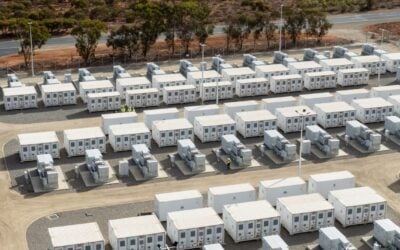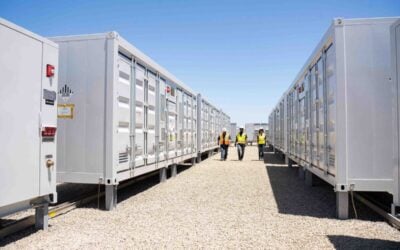
China has published a national plan to promote large-scale energy storage facilities, encouraging investment and broader participation in the electricity market.
The ‘Special action plan for large-scale construction of new energy storage (2025-2027)’ was published last Friday (12 September), formulated jointly by the country’s National Development and Reform Commission and National Energy Administration (NEA).
The policy and regulatory roadmap is aimed at pushing China’s installed base of large-scale energy storage – primarily lithium-ion battery energy storage systems (BESS) – to 180GW by the end of 2027.
According to an announcement from the State Council of the People’s Republic of China, this would drive about RMB250 billion (US$35.2 billion) in direct project investment.
Enjoy 12 months of exclusive analysis
- Regular insight and analysis of the industry’s biggest developments
- In-depth interviews with the industry’s leading figures
- Annual digital subscription to the PV Tech Power journal
- Discounts on Solar Media’s portfolio of events, in-person and virtual
The plan’s target represents a significant scaling up, even for the world’s leading adopter and producer of energy storage technologies.
According to official National Energy Administration data from its recent ‘China new energy storage development report 2025,’ the country’s installed base at the end of 2024 totalled 73.8GW/168GWh.
The China Energy Storage Alliance (CNESA) trade group said this represented a 130% year-on-year increase and about 40% of the global total.
China’s goal would mean that the country would have almost as much battery-based or non-pumped hydro storage installed by the end of 2027 as the entire world does today.
Figures from market intelligence firm Rho Motion, taken from its monthly global BESS database report, found that, after a 28% year-on-year increase in installs over 2024 numbers to this point in the year, total operational grid-scale BESS capacity globally hit 189GW/457GWh.
ESN Premium subscribers can read further takeaways from Rho Motion’s Battery Energy Stationary Storage Monthly Database in an article published Monday. It includes the statistic that China deployed around 2.5GW/8GWh during August, 64% of the global total of 4GW/12.5GWh.
To achieve the Special Action Plan’s targets, the participating agencies outlined 21 key measures, including scaling up energy storage applications in power grid and grid infrastructure settings, accelerating technological innovation, and increasing standardisation.
The State Council announcement also stressed the need to develop workforce talent and enhance international sector cooperation.
CNESA noted in an update that the roadmap also guides for the pilot deployment of new technologies, while standardisation will be implemented across different storage applications as well as technologies.
The government wants to see energy storage encouraged to fully participate in the electricity market, including orderly participation in the medium- and long-term market, CNESA said. The plan’s publication came on the same day Chinese leader Xi Jingping, general secretary of the Chinese Communist Party, launched an initiative to progress artificial intelligence (AI) tech and adoption and on which the National Energy Administration announced the start of operations at the country’s biggest-ever lignite coal plant





